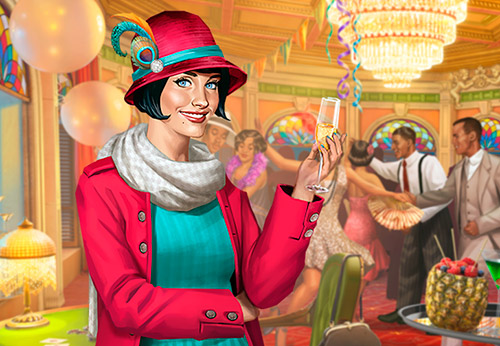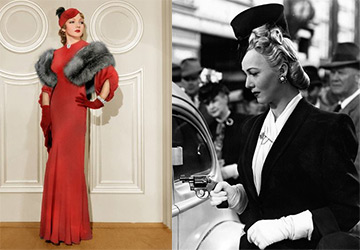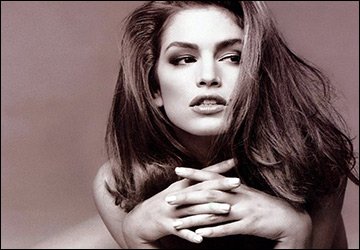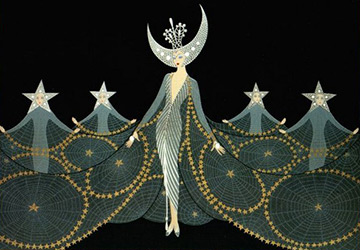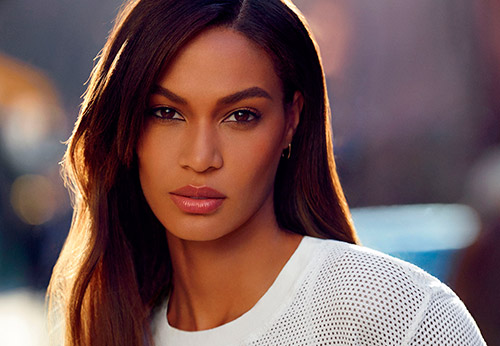Fashion history
Women's costumes of the 30s
"I never go out if I don't look like movie star Joan Crawford ..."
Joan Crawford
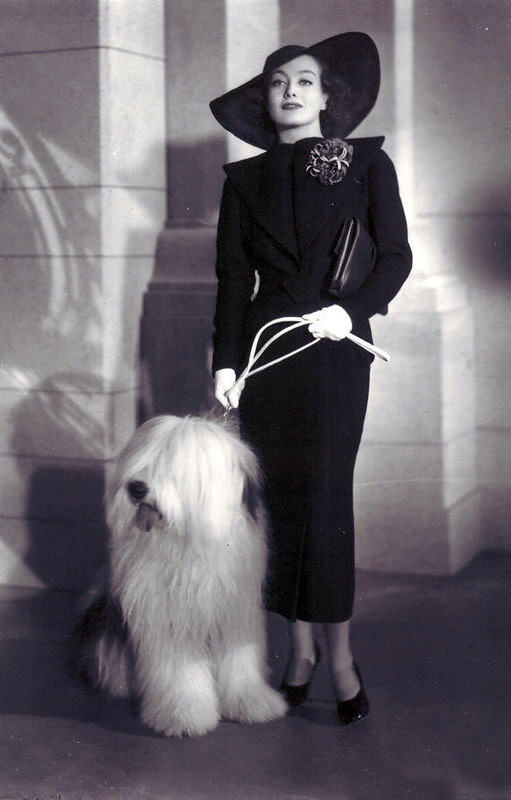
In the 30s, cinema changed life, including fashion. Vogue even asked the question: "Who influences whom?" It is thanks to the mutual influence of cinema and fashion that fashion has become widespread. One of the fashion designers was Adrian, who worked as the chief fashion designer for the Metro-Goldwyn-Mayer film studio in the 1930s and 40s. He has worked with many movie stars, but his longest and warmest relationship is with Joan Crawford. He wore her in 28 films.
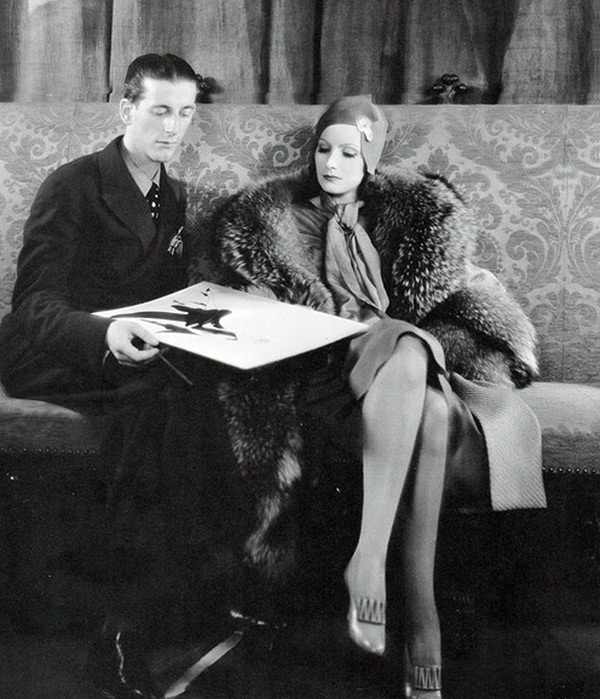
Adrian Gilbert and Greta Garbo
Adrian often revealed the dignity of the figure of clients where others did not see them. He decided not to mask, but to emphasize the broad shoulders of the actress. Adrian then proposed overhead hangers and thus created a fashion for a silhouette with an extended shoulder line and a narrow skirt. Some tailoring experts believed that he wanted to create a counterbalance to the wide hips. But what really impressed him was the figure of Joan Crawford.
He admired her and created outfits for her that made Joan a trendsetter of style, and they brought him the fame of an unsurpassed master in the art of dressing the stars. He himself later joked: "Who would have thought that my career would rest on the shoulders of Crawford?" the film "Women", which was released in 1939, brought him real fame. In this film, he dressed the main characters - Joan Crawford, Norma Scherer, Rosalind Russell and many other actresses.
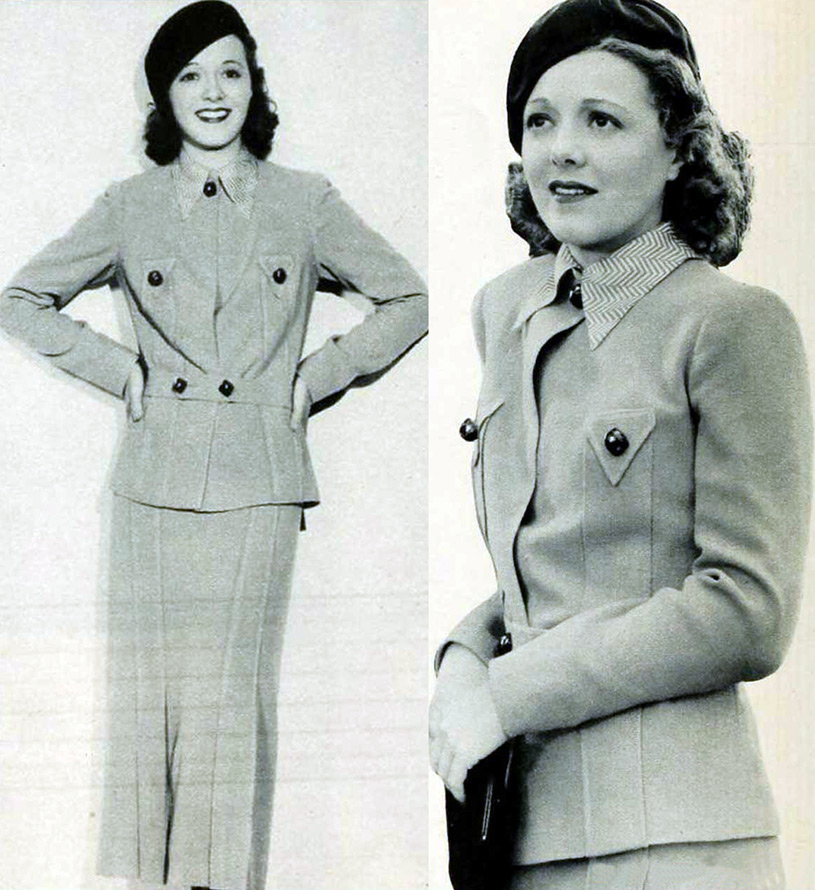
Adrian was born in 1903, his real name is Gilbert Adrian, he graduated from the art institute, then worked in the theater, and from 1928 to 1942 he worked for the MGM film company (Metro-Goldwin - Meyer).
He had a rare gift for creating historical costumes and fashionable clothes that actresses loved and wore in everyday life. In 1942 he opened his own fashion house. Adrian did not live a long life - he died in 1959.
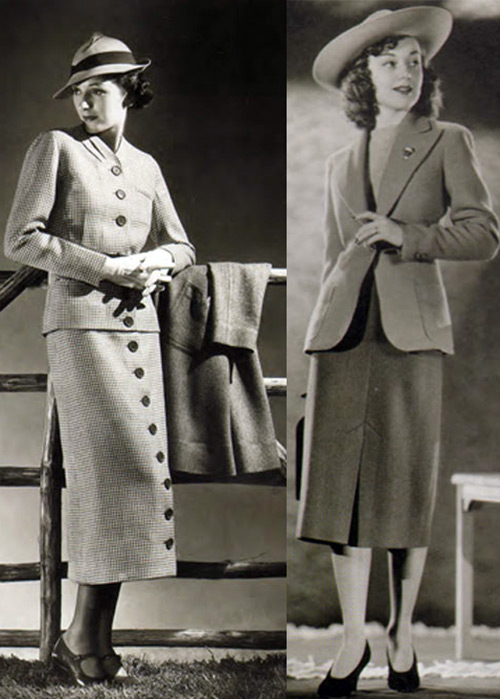
And so, the suit of the 30s - extended shoulders and a tight skirt.
A woman's jacket, slightly belted at the waist or tightly fitted, with a single-breasted closure, has become identical to the men's jacket. Such a suit was called English. In England, they appeared everywhere, since there was opened mass production of suits from a material - tweed, from which men's jackets were sewn.
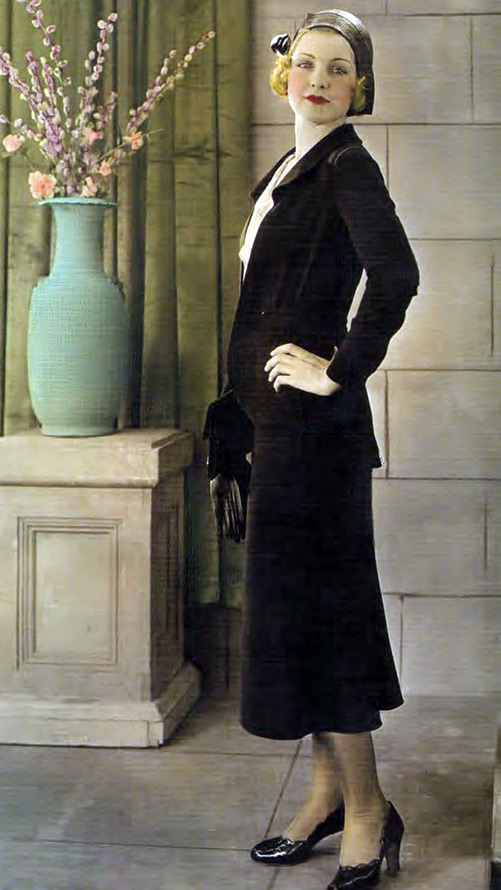
The black suit was considered the most elegant and was worn with an English piqué or silk blouse. The low cut of the jacket was complemented by widened lapels that reinforced the shoulder line. The jacket enlivened a bunch of violets. Glamor was added by suede gloves and a clutch to match the gloves, a soft felt trilby hat and broochpinned at the neck of the blouse. All these accessories made the costume feminine and businesslike.
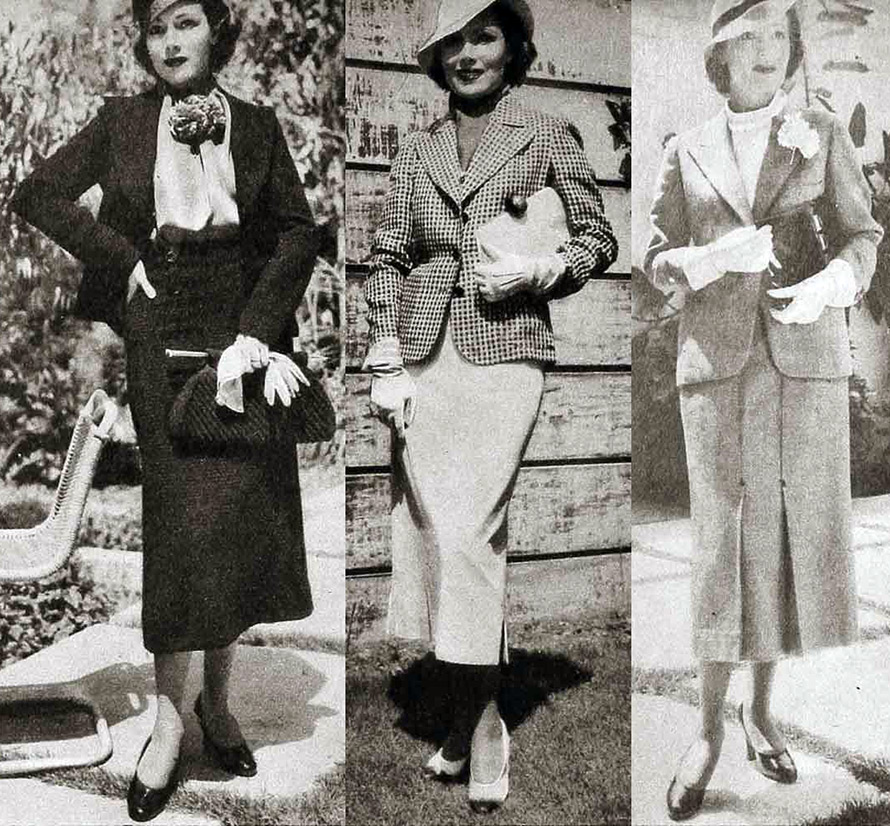
There were also sports-style suits that were made of dark or white English wool. The fabric was plain or checked, and was worn from melange, in the summer from silk or linen. In the cool period, they wore a cape of the same material or a sports raincoat on a jacket. A walking suit, as it was then called, or a travel suit was made of tweed with blouses that matched the fabric of the suit. A small felt hat, shoes with low or medium heels were worn with such a suit. The bag was supposed to be worn from leather or suit fabric.
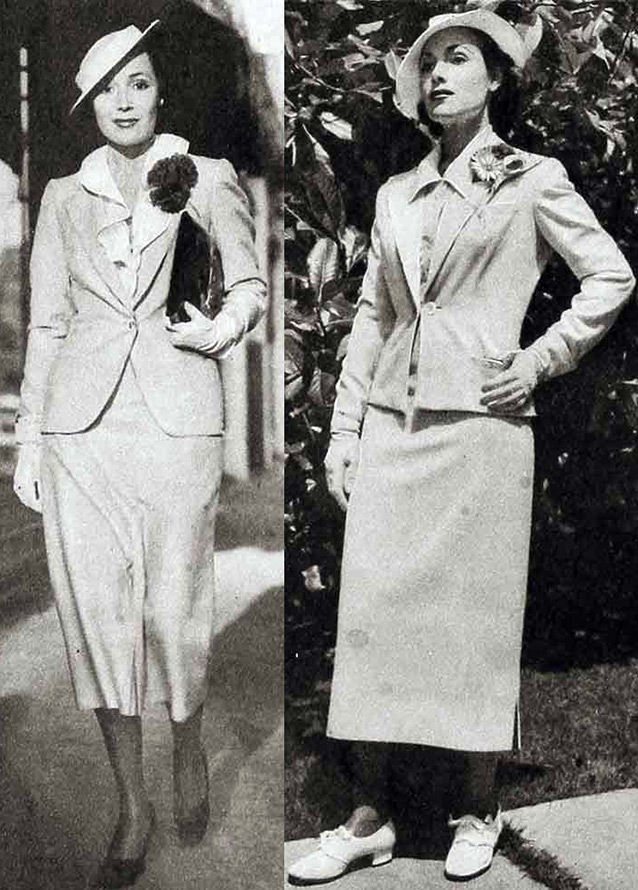
The whole ensemble was completed by a raglan coat, also made of the same fabric. The coat could be long and even slightly thrown over. Suits were so popular in the 1930s that they supplanted afternoon and even visit dresses. These suits were sewn from patterned or smooth silk, the blouse was matched to them in a contrasting color, in the boutonniere there was a flower of the same color as the blouse. In restaurants, more elegant suits were worn - with flared basques, with fur trim. Blouses for these suits were selected from brocade. Sometimes an ensemble was created - a separate jacket made of wool or silk with a sleeveless dress.
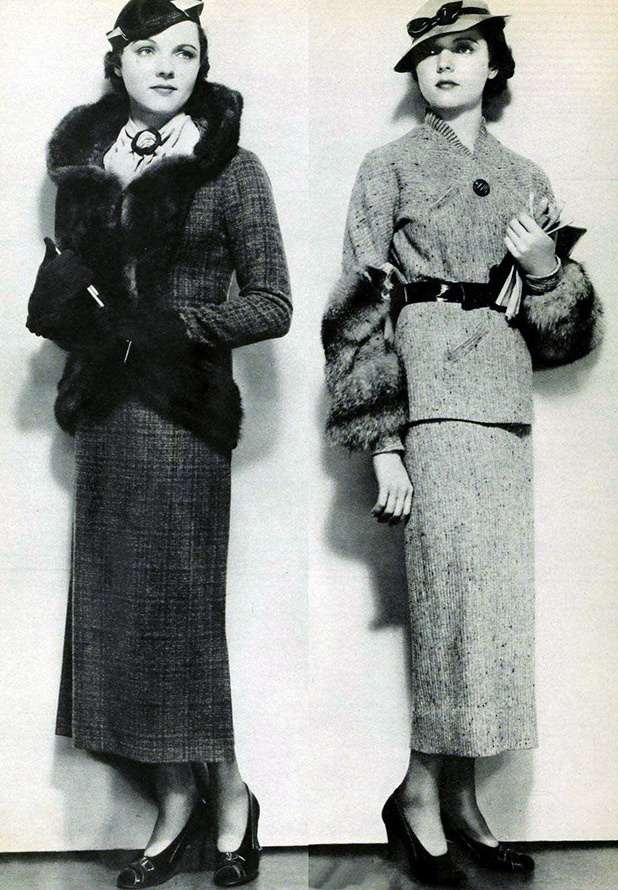
In 1939, VOGUE magazine first presented trousers in combination with a jacket, although for a long time wide-leg trousers became part of an elegant woman's wardrobe, but it was not accepted to appear in society in them.
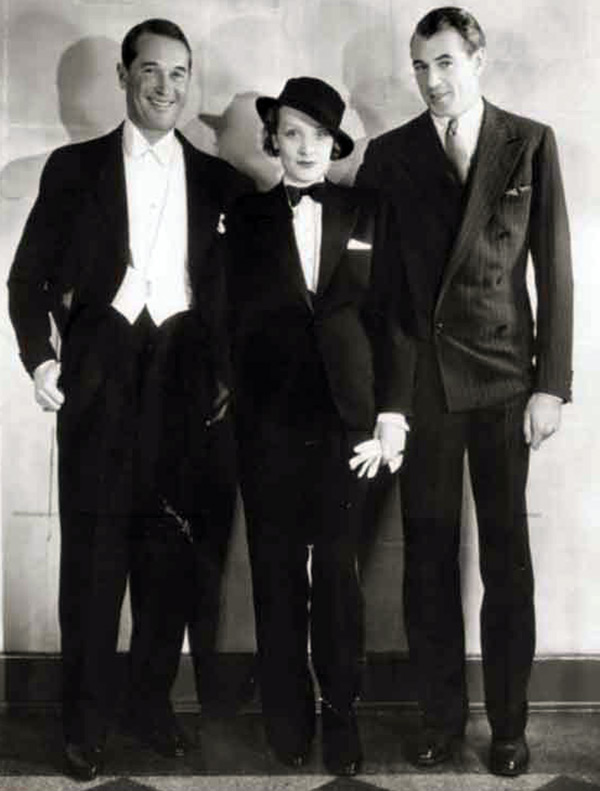
The photo below shows modern women's trouser suits in the style of the 1930s.
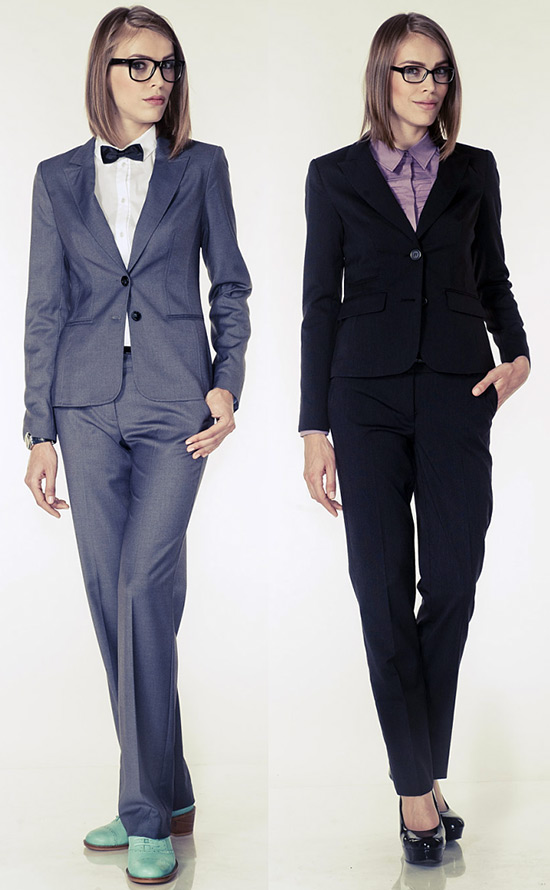
Comments and Reviews
Add a comment
Rating news
Shades of clothing that make women look younger
What shades of hair make women younger: rules and photos
Funny wedding dresses - photos and ideas
12 most expensive down jackets for the winter
How to look 25 at 40: tips from supermodels
Beautiful schoolgirls
Anti-aging haircuts and hairstyles for women
Fashionable skirts for autumn and winter
Fashionable women's trousers for the cold season
Fashionable and stylish sandals for summer 2024
Spring-summer 2024
 Fashionable dresses and tops with thin spaghetti straps
Fashionable dresses and tops with thin spaghetti straps
 Bandana tops: how to wear stylishly and beautifully
Bandana tops: how to wear stylishly and beautifully
 How to put together the perfect men's wardrobe for the summer
How to put together the perfect men's wardrobe for the summer
 Fashionable shorts for spring-summer 2024
Fashionable shorts for spring-summer 2024
 Fashionable skirts for spring-summer 2024: a guide to online shopping
Fashionable skirts for spring-summer 2024: a guide to online shopping
 The most fashionable dresses spring-summer 2024: styles and colors
The most fashionable dresses spring-summer 2024: styles and colors
 Fashionable total look 2024: ideas of images and trends
Fashionable total look 2024: ideas of images and trends
